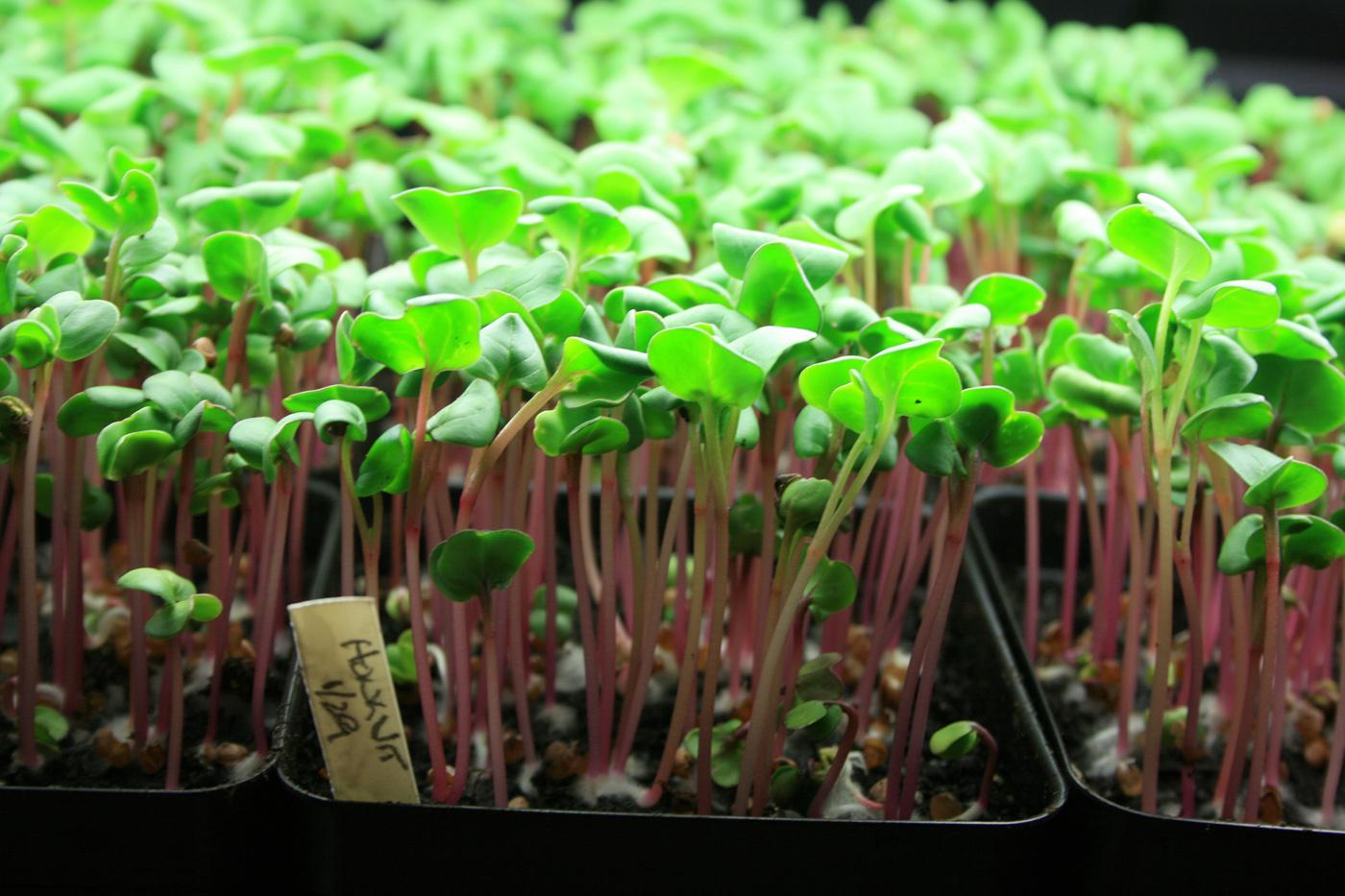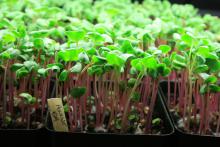Information Possibly Outdated
The information presented on this page was originally released on January 17, 2012. It may not be outdated, but please search our site for more current information. If you plan to quote or reference this information in a publication, please check with the Extension specialist or author before proceeding.
Indoor microgardens can stop winter blues
These are classic symptoms of gardening cabin fever. For the active gardener, it only gets worse when all those catalogs start arriving.
A simple cure is to bring the garden indoors until spring arrives. Many of those incoming catalogs offer indoor gardening options that border on the extravagant, with fancy grow lights, recirculating pumps and special growing pods.
But an indoor garden can be as simple as some fresh microgreens on the windowsill in a pot. In fact, having a microgreens garden in the winter is the perfect way to satisfy the need to garden and to have delicious and nutritious salads at the same time.
Microgreens are colorful and take as few as seven days to produce a wonderful addition to the dinner table. Asian greens such as bok choi, cole crops such as cabbage or broccoli, or foliage of carrots, radish, Swiss chard or beets are often used.
Herbs like basil -- the lemon or lime basil selections work quite well indoors -- cilantro and parsley can be grown indoors. Lettuce is not a good choice, as the plants tend to stretch too much when grown indoors.
Growing microgreens is easy and requires only a small space on a windowsill or under a light. Any size container will do. Small containers will provide enough to spice up a single dinner or salad. If you use bedding plant flats, you can grow enough to supply fresh microgreens throughout the week.
Always grow your microgreens in a good potting mix marketed to be used in containers.
Thickly sprinkle seeds of your favorite greens on the surface of the moistened growing mix. Because the plants are small and you will harvest them after only a short period of time, overcrowding will not be a problem. You actually want your container to be thick and lush with the growing microgreens.
Gently tap the seeds into the soil and cover. A large zip-top bag covers containers well, while a plastic dome is ideal if you are using a bedding plant flat.
The seeds will start to germinate after a couple of days, and most greens will be ready to start harvesting after seven days. Some microgreens, such as beets or basil, take 21 days before they are ready to harvest.
Sow seeds weekly to ensure a steady supply of microgreens and keep you free of cabin fever.
The best way to water your microgreens is to place the container in a saucer, add water to the saucer and let plants soak up water from the bottom. Because the plants are small, sprinkling from the top will beat them down.
If you plan to grow more than just a few containers over the winter, consider ordering your seed in bulk quantities to save money. However, buying individual packets from the garden center is a great way to try a variety of microgreens.
So if you are exhibiting any of the symptoms of gardening cabin fever, try growing some of these fresh microgreens indoors. Not only will you scratch that gardening itch, but you’ll have some tasty salads this winter, too.










